Revised
Evergreens
Broad-leaved evergreens generally need protection from winter winds and afternoon sun to prevent browning of leaves. Often, sites on the north or east sides of buildings are best.
American holly (Ilex opaca)

- Shade tolerance
Light to medium - Size
15 to 30 feet tall, 10 to 20 feet wide - Native to southeast Missouri. Slow growing. Best treated as a large shrub, although it can become a medium-sized tree. Separate male and female plants. Red berries produced on females if pollinated by male. Needs a protected site in the north.
Canada hemlock (Tsuga canadensis)
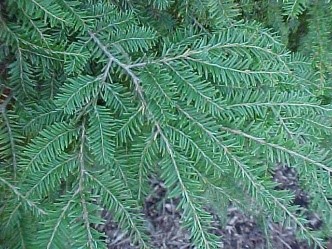
- Shade tolerance
Light to medium - Size
40 to 60 feet tall, 25 to 30 feet wide - Easily kept sheared to a height of 3 to 5 feet as a hedge. Needs well-drained soil, but doesn't tolerate drought or drying winds. Very cold hardy.
Drooping leucothoe, Fetterbush (Leucothoe fontanesiana)
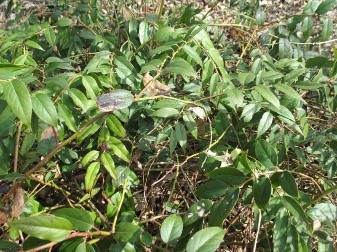
- Shade tolerance
Light, medium or full - Size
3 to 6 feet tall and wide - Fragrant white flowers in spring. Species has green to bronzy foliage. Some selection have been made for white to pink variegation in foliage color. Fall color is purplish-red. Does best in moist, acid, protected sites. Best in the southern half of Missouri. Leaf spot can be serious.
Japanese holly (Ilex crenata)

- Shade tolerance
Light to medium - Size
5 to 10 feet tall and wide - Much variability in size and hardiness of cultivars. Some take many years to reach 3 feet in height. Best adapted to the southern half of the state. Finer texture than American holly. Non-showy, black fruits are produced on female plants.
Japanese pieris (Pieris japonica)
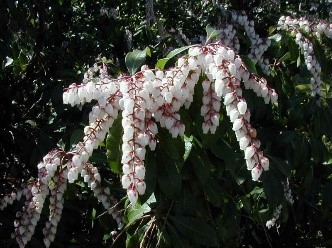
- Shade tolerance
Light to medium - Size
5 feet tall and wide - Panicles of white, pink or red flowers in springtime. Flower buds are formed the previous summer, and are attractive through the winter. Foliage is deep green, sometimes emerging red as in the cultivar 'Mountain Fire.' Best in the southern half of the state.
Leatherleaf viburnum (Viburnum rhytidophyllum)
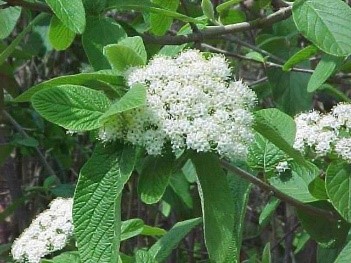
- Shade tolerance
Light to medium - Size
10 to 15 feet tall and wide - Upper leaf surface is leathery green, underside is grayish brown. Semi-evergreen. May suffer some dieback in severe winters, but will resprout from base. White flower clusters in midspring, followed by red fruits turning black in fall.
Littleleaf boxwood (Buxus microphylla)
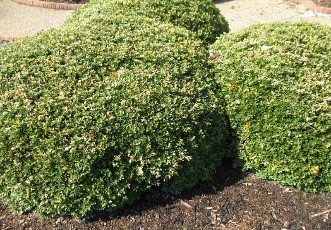
- Shade tolerance
Light and wide - Size
3 to 4 feet tall - Var. koreana is extremely hardy, but yellows during winter. 'Wintergreen' maintains better green color through winter. Shallow-rooted plants do best with mulching to keep roots cool and moist. Common boxwood, B. sepervirens, is best suited to southeast Missouri.
Oregon grapeholly (Mahonia aquifolium)
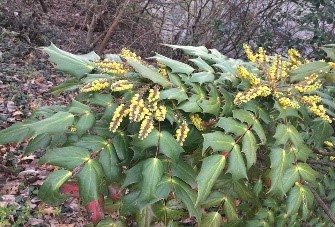
- Shade tolerance
Light to medium - Size
3 to 5 feet tall and wide - Bright yellow clusters of flowers in spring followed by blue-black berries that hang on into winter. Foliage resembles holly. Unfolds reddish-bronze, turning medium green in summer. Semi-evergreen through winter.
Rhododendron (Rhododendron sp.)
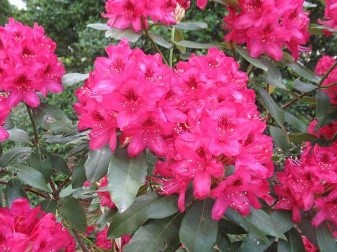
- Shade tolerance
Light to medium - Size
Variable - Many species and hybrids of azaleas and rhododendrons are available. All do best in light shade with acidic, well-drained soils. Some are deciduous, and some are evergreen. 'P.J.M.' and 'Nova Zembla' are two of the hardiest evergreen types.
Spreading euonymus (Euonymus kiautschovicus)

- Shade tolerance
Light to medium - Size
4 to 8 feet tall and wide - Glossy semi-evergreen foliage. 'Manhattan' and Paulii' are common varieties. Can be invasive.
Yew (Taxus x media)
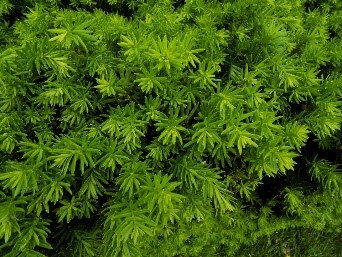
- Shade tolerance
Light, medium or full - Size
Variable - As a hybrid of two other species, plants vary from upright to spreading forms. 'Hicks' is a common upright cultivar. 'Taunton' is a spreading form only 3 to 4 feet tall which shows good resistance to winter burn and good heat tolerance. Needs well-drained soil. Female clones may produce red fruits.